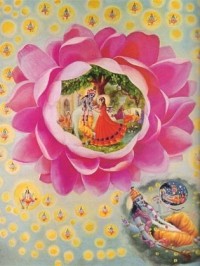by Kara-Leah,
Maya is a Hindu, or Vedic concept – the word refers to the illusion of physical and mental reality that we operate under.
Piercing the veil refers to seeing or perceiving past this illusion to glimpse the transcendent truth. It means waking up, becoming enlightened, becoming conscious.
So what does this have to do with us in our every day lives and how can we use it?
We all live our lives with the expectation that the reality we perceive and experience is True. Yet this reality is clouded by maya.
Hitler believed in his True Reality that the Jews were inferior and meant to be exterminated.
The American South once believed in their True Reality that Africans were sub-human and could be bought and sold as property.
Our media believes that the actions of a young blonde woman named after a European city are worthy of nightly attention.
This is Maya.
We can see that these realities are not true. But how can we know if OUR reality is any more true? What do we hold to be true that is completely unreal?
To understand more about Maya, and how it affects us, let us demonstrate how perception rules experience.
Imagine three people, each wearing coloured glasses. One wears green-tinted glasses, one red-tinted, and the third blue-tinted. Hold up a piece of white paper and ask each of them what colour it is. Each will answer differently, none will be ‘true’. Remove the glasses, and they see the true nature of the piece of paper. White.
But removing the veil of Maya from in front of our eyes is not as easy as removing a pair of glasses.
First one has to know that one even wears glasses.
Then one has to find a way to remove them.
So what is Maya exactly – what is IT’s nature?
The maya that clouds our perception of reality is nothing more than the beliefs we hold to be true, the judgments we make that divides everything into duality – good/bad, hot/cold, tall/short, our ego desires and ego aversions…
These are four qualities of Maya. These beliefs, judgments, desires and aversions determine our perception of what is.
Here’s an example of Maya in action.
Let’s take our three people again, but instead of tinted glasses, let’s construct Maya.
Our three people are taking a yoga class, and are about to come into Warrior 3.
Adam loves this posture, he feels desire toward it because he is able to do it easily and it makes him feel strong, flexible and successful. As these are comfortable states of being, he enjoys doing Warrior 3.
Becky hates Warrior 3. She feels aversion to it because it’s very difficult for her and it makes her feel awful. She’d rather cop out and do child on the floor.
Zac has never done Warrior 3 before. He doesn’t know whether he’ll like it, or hate it. He’s never heard about it either, so he doesn’t believe it’s easy or hard. And because he’s never heard of it, or done it, he has no judgment of what Warrior 3 is.
Each of our three students then do exactly the same posture.
Do they are have exactly the same experience?
After class, we eavesdrop on them
Adam is grumpy and sullen. While he usually loves Warrior 3, today he couldn’t keep his balance and fell out several times. He feels dejected. He’s busy telling someone how hungover he is and how it totally affected his balance…
Becky is ecstatic. She was finally able to come fully into the posture and felt light and comfortable. She’s radiating joy and telling everyone she can’t wait to go home and practice it again tonight.
Zac is content. When someone asks him how he found Warrior 3, he smiles and says, ‘I don’t understand it yet, but I’ll keep doing it’.
Same posture.
Three different responses.
So what IS Warrior 3? Can we ever know the true nature of this posture without maya clouding our experience? Is it possible to experience reality without judgment, belief, desire and aversion?
That is where yoga takes us. It shows us, as we practice Warrior III day after day after day that while our experience changes, the posture remains the same. And then one day, all our thoughts about it, our preconceptions, our desires and beliefs drop away and we come into Warrior III and we are THERE.
This is why we practice!


Beautiful! So great to read your articles. Warm wishes, P
Hey Peter,
Thank you for stopping by – it’s my absolute pleasure to write and share my experience of yoga.
Blessings,
KL